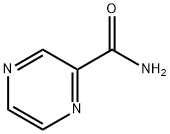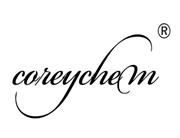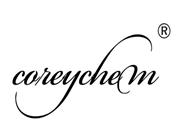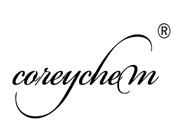1/1
Pyrazinamide
$ 1.00
/1KG
- Min. Order1G
- Purity98%
- Cas No98-96-4
- Supply Ability100KG
- Update time2019-07-06

career henan chemical co
VIP8Y
 China
China
Since:2014-12-17
Address:Zhengzhou High tech Zone, Henan Province, China
Enterprise Verified
Business Bank account
Basic Contact Infomation
Business Address
Trade Company



Chemical Properties
| Product Name | Pyrazinamide |
| CAS No | 98-96-4 |
| EC-No | |
| Min. Order | 1G |
| Purity | 98% |
| Supply Ability | 100KG |
| Release date | 2019/07/06 |
AD68
| Pyrazinamide Basic information |
| Anti-tuberculosis drug Drug Interactions Indications Dosage First aid treatment Adverse reactions and side effects Uses |
| Product Name: | Pyrazinamide |
| Synonyms: | 2-Carbamylpyrazine;Aldinamid;Aldinamide;Eprazin;Farmizina;MK 56;mk56;NCI-C01785 |
| CAS: | 98-96-4 |
| MF: | C5H5N3O |
| MW: | 123.11 |
| EINECS: | 202-717-6 |
| Product Categories: | Drug bulk;Aromatic Carboxylic Acids, Amides, Anilides, Anhydrides & Salts;Pyrazines, Pyrimidines & Pyridazines;Antitubercular;Pyrazinamide;Pyrazines;Chloropyrazines, etc.;Amide;Heterocycles;Intermediates & Fine Chemicals;Pharmaceuticals;Pyrazines, Pyrimidines & Pyridazines;API;Pyrazinoic acid amide;TEBRAZID |
| Mol File: | 98-96-4.mol |
 |
|
| Pyrazinamide Chemical Properties |
| Melting point | 189-191 °C(lit.) |
| Boiling point | 229.19°C (rough estimate) |
| density | 1.3260 (rough estimate) |
| refractive index | 1.5900 (estimate) |
| Fp | >110°(230°F) |
| storage temp. | -20°C Freezer |
| solubility | H2O: soluble50mg/mL |
| form | Crystalline Powder or Needles |
| pka | 0.5(at 25℃) |
| color | White |
| PH | 7 (H2O) |
| Water Solubility | 15 mg/mL |
| Merck | 14,7956 |
| CAS DataBase Reference | 98-96-4(CAS DataBase Reference) |
| NIST Chemistry Reference | Pyrazine carboxamide(98-96-4) |
| EPA Substance Registry System | Pyrazinecarboxamide(98-96-4) |
| Safety Information |
| Hazard Codes | F,C |
| Risk Statements | 11-34 |
| Safety Statements | 22-24/25-45-36/37/39-26-16 |
| WGK Germany | 3 |
| RTECS | UQ2275000 |
| TSCA | Yes |
| HS Code | 29339990 |
| Hazardous Substances Data | 98-96-4(Hazardous Substances Data) |
| Pyrazinamide Usage And Synthesis |
| Anti-tuberculosis drug | Pyrazinamide is a second-line anti-tuberculosis drug, also known as formamide pyrazine, carbamoyl pyrazine, and isonicotinic acid amine. At room temperature, it appears as a white crystalline powder and is slightly soluble in water and is odorless with slightly bitter taste. It has a good antibacterial effect against human type Mycobacterium tuberculosis with the strongest bactericidal effect at the range of pH value being between 5-5.5. It has especially optimal bactericidal effect against the Mycobacterium tuberculosis inside the slow-growing phagocytic cells in acidic environment. After pyrazinamide penetrates into the phagocytic cells and enter into the body of Mycobacterium tuberculosis, lactamase in vivo make it be de-amidated, being converted to pyrazine acid to play the antibacterial effect. The in vivo inhibitory concentration is 12.5μg/ml with the concentration of 50 μg/ml being able to kill the Mycobacterium tuberculosis. The inhibitory concentration against Mycobacterium tuberculosis in vivo is 10 times lower than that in vitro with almost no inhibitory effect in a neutral, alkaline environment. Its anti-bacterial effect is between streptomycin and paramisansodium. It has great toxicity and can easy to produce drug resistance and should be used in combination with other anti-TB drugs. Pyrazinamide has similar chemical structure with nicotinamide and can interfere with the dehydrogenase through substitution of nicotinamide, therefore preventing the dehydrogenation and inhibiting the utilization of oxygen by Mycobacterium tuberculosis, causing death of the bacteria due to failure of normal metabolism. It is oral easily absorbed and is widely distributed in body tissues and fluids including liver, lung, cerebrospinal fluid, kidney and bile. After 2 hours, its plasma concentration can reach peak. The concentration of cerebrospinal fluid is similar as blood concentrations. It can subject to hepatic metabolism to be hydrolyzed to the pyrazine acid that is a kind of metabolite having antimicrobial activity, then further being hydroxylated into inactive metabolites and excreted in urine after glomerular filtration. The t1/2 is about 8 to 10 hours. It can be used in combination with other kind of anti-TB drugs fro the treatment of some complex cases of tuberculosis and tubercular meningitis patients. |
| Drug Interactions | 1, when being combined with allopurinol, colchicine, probenecid, and sulfinpyrazone, pyrazinamide can increase the serum uric acid concentration and further reduce the efficacy of the above drugs on gout. Therefore, when being combined with pyrazinamide, the above drugs should be subject to dose adjustment in order to control hyperuricemia and gout. 2, it can enhance the adverse reactions when combined with B sulfur isonicotinoyl amine. 3, when cyclosporine is used simultaneously with pyrazinamide, the blood concentration of the former drug may be reduced, and therefore the blood concentration needs to be monitored and we should adjust the dose if necessary. 4, it has synergistic effect when combined with isoniazid and rifampin and can delay the development of drug resistance. The above information is edited by the chemicalbook of Dai Xiongfeng. |
| Indications | It can be used in combination with other anti-TB drugs for the treatment of tuberculosis that failed to be cured by first-line anti-TB drugs (such as streptomycin, isoniazid, rifampicin and ethambutol). This product is only valid against mycobacteria. In the past, pyrazinamide was used as second-line drugs, commonly applied to the patients undergoing retirement due to failure to be cured by other anti-TB drugs. A large number of clinical studies have shown: the short course regimen containing this product is suitable for being applied to the newly diagnosed sputum-positive cases. It is generally applied for 2 to 3 months. This protocol can enable a significant reduction of the re-positive rate of Mycobacterium tuberculosis after the end of treatment. This product has been well considered as the composition of triple or quadruple protocols in short course chemotherapy. |
| Dosage | When used in combination therapy with other anti-TB drugs, the common dose of adult oral administration is: every 6 hours according to the weight 5-8.75mg/kg, or every eight hours according to the weight 6.7-11.7mg/kg; the highest value is 3 g daily. Upon treatment of the infection of isoniazid resistant bacteria, you can increase the dose to 60 mg/kg daily. Children should take with caution, the necessary reference amount should be: 20-25mg/kg daily, it should be separately orally administrated in 3 times with the maximum dose being 2 g daily, the treatment course is generally 2 to 3 months, it can not be more than six months. |
| First aid treatment | 1. Misusage patients should be immediately subject to gastric lavage and catharsis. 2. If liver dysfunction occurs during the course of treatment, the drug should be discontinued and routine liver-protection therapy should be applied. 3. Patients of gout should be given 0.25g/time probenecid (carboxymethyl benzene with oral administration in 3 times daily and being able to promote the excretion of uric acid. 4. Allergic patients should be given treatment with antihistamines and corticosteroids. |
| Adverse reactions and side effects | Long-term or high-dose application of the product is easy to cause liver damage and increased blood uric acid and can also cause gastrointestinal irritation and allergic reactions. For patients of relative high incidence: loss of appetite, fever, unusual fatigue or weakness, yellowing of the eyes or skin (liver toxicity). Persons of low incidence: chills, joint pain (especially in the big toe, the condyle, knee) or diseased joints skin taut fever (acute gouty joint pain). During the treatment course of this drug, the blood uric acid can increase and can cause acute gout that should be subject to determination of serum uric acid. Adverse reactions are dose-related. After current application of conventional dosage, adverse reactions have been rarely observed. Hepatic impairment: administration of drug for 3g daily with about 15% of patients getting liver damage, hepatomegaly, tenderness, elevated transaminases and jaundice. Currently upon applying 1.5 g daily for a 3-month treatment course, reactions of liver toxicity are rare. Joint pain: PZA metabolites can inhibit the excretion of uric acid, causing hyperuricemia and gout-like performance with resumption after stopping drug. Gastrointestinal reactions: loss of appetite, nausea, vomiting. Allergies: occasionally fever and rash, and even jaundice. Skin reactions: in some individual cases, the patients are light sensitive with the exposed parts of the skin being bright red brown. Patients subject to the long-term medication have their skins be bronze that can be gradually restored after the withdrawal of the drug. For diabetic patients taking pyrazinamide, it is difficult to control the level of blood sugar. |
| Uses | It is a kind of anti-tuberculosis drugs. |
| Chemical Properties | Crystalline Solid |
| Uses | Antibacterial (tuberculostatic) |
| Uses | An antibacterial agent used to study liver toxicity prevention |
| General Description | White powder. Sublimes from 318°F. |
| Air & Water Reactions | Water soluble. |
| Reactivity Profile | Pyrazinamide is a carbamate ester. Incompatible with strong acids and bases, and especially incompatible with strong reducing agents such as hydrides. May react with active metals or nitrides to produce flammable gaseous hydrogen. Incompatible with strongly oxidizing acids, peroxides, and hydroperoxides. |
Company Profile Introduction
Established in 2014,Career Henan Chemical Co. is a manufacturerspecializing in the sale of fine chemicals. Mainly deals in the sales of: Pharmaceutical intermediates OLED intermediates: Pharmaceutical intermediates; OLED intermediates;



